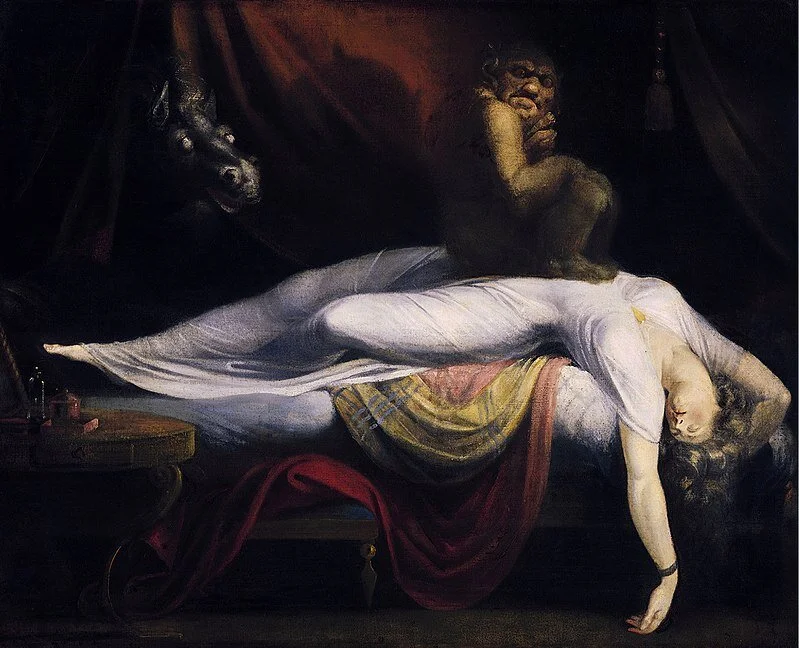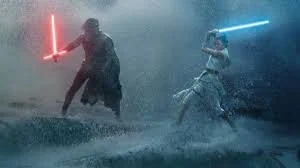The second in Octavia Butler’s Xenogenesis/Lilith’s Brood trilogy, Adulthood Rites (1988) sees the alien Oankali and human survivors of global apocalypse start to interbreed on a rehabilitated Earth. This is all according to the Oankali’s grand plan, to merge both species entirely into one. The Oankali, you’ll remember, are gray, patient, peace-loving, but grotesque aliens writhing with tentacles, and reproduce with three sexes: male, female and the ooloi, their genetic cocktail mixer. But there are also villages of human resisters, who have tried to revive a purely human civilization. One problem: the Oankali made them sterile, so they’re kidnapping Oankali-human hybrid children—like Lilith’s son, Akin. Well, there are other problems too. Gemma Webster and Theodore McCombs talk about Akin’s coming-of-age story in this second entry in Fiction Unbound’s appreciation of Xenogenesis.
Gemma Webster: Ted, you started out our last discussion asking about Dawn’s relevance, nearly thirty years later. What do you see as the modern relevance of Adulthood Rites?
Theodore McCombs: It’s unnerving to think about how different my answer would have been, just a week ago. The Oankali’s paternalism and the resister humans’ despairing, self-destructive violence mirrors post-election conversations I’ve seen about an elitist, know-it-all Left and the resurgent working-class whites pushing back, even if that pushback means nihilistically electing a predatory, amoral goon.
GW: There are definitely important discussions about navigating binary ways of being currently. I’ve seen a post election desire to dissolve that binary thinking, but just as soon as that sentiment starts to gain some ground, the anger and pain resurges, knocking people back into their binary corners. It’s interesting that in Adulthood Rites the humans are struggling with the us vs. them binary while the Oankali (who of course are the empowered) have found peace with the simultaneous merging (and thus ending) of the disparate human and Oankali species. Though to be fair to the humans, this has always been the Oankali’s way of evolution.
TM: And there’s something melancholy and beautiful about the thought of both Oankali and humans coming to that “end,” and the Earth with them. The Oankali-human villages, we learn, are actually baby spaceships that will strip the planet of its soil, trees, and oceans as they mature and become space-faring. That feels very relevant when we don’t know how many more generations our planet will support.
But back to the President-elect. Discussions of toxic masculinity—what the Oankali might call a “hierarchical” masculinity—were yuuuge in this election. What’s your take on how Butler tackles masculinity?
GW: Adulthood Rites is a coming-of-age story, and like all coming-of-age stories, it offers a young protagonist options about how to be. It’s interesting that we are given this story through the point of view of male characters, mostly Akin (from infancy to sexual maturation), Dichaan (his Oankali same-sex parent) and Tino (his adopted human father). Dawn was told from a woman’s point of view, while Adulthood Rites is exclusively male—that's two of the Oankali Holy Trinity of sexes. Is Book 3 going to be told from an exclusively ooloi perspective?
Anyway, the Oankali's main worry is that human masculinity embodies their (our) hierarchical destructive urges. This is why they created construct females exclusively at first. Akin is a risky experiment in maleness, but Butler grants him a human stepfather and a human biological father who defy that view of masculinity. The Oankali are all about stereotypes!) Akin’s human fathers are gentle men who are neither tall nor large. His third father figure is Dichaan, who is both a genetic and nurturing male contributor, and one hundred percent Oankali. These are Akin’s first role models. He will return to them after his kidnapping, but along the way, he is offered other options of maleness.
TM: Like the resister humans in the village of Phoenix, a lot of whom feel like mirrors for modern examples of toxic masculinity. When Phoenix acquires (kidnaps) two hybrid girls, some of the villagers want to cut off the sensory tentacles growing from their throat, to make the girls look more human, even while Akin warns them the surgery will traumatize and cripple the girls. That’s a pretty clear reference to female genital mutilation, I’d say.
GW: Definitely, and this event leads Akin into a gray area when it comes to violence. Oankali pride themselves on their honesty and non-violence, though they retain the (mostly never used) capacity to sting an enemy to death. The humans believe in the Oankali’s pacifism nearly to the point of their own destruction, thinking that the hybrid constructs were not given this same protection method. But self-defense is found to be a universal value.
TM: When you talk about a choice of different ways of being, the most different (to us) comes when Akin visits the Oankali mothership and meets an Akjai ooloi, who represents the “purer” strain of Oankali. It’s through the Akjai that we understand more of the Oankali’s paternalism: Akin realizes, and we learn, that the mature Oankali ooloi read a species’ future from its genes with as much certainty as we read a map. The essential argument that the resisters and Lilith make—that humans deserve to see whether they can avert their own destruction—is as bizarre an argument as some stoner on Colfax Avenue arguing they should take the 15 bus because it might go to Maine. Can’t you read??
GW: Genetic determinism! Where’s the human rebuttal to that? That brings us back to the other side of the human contradiction that attracted the Oankali to the humans in the first place, their (our) intelligence. So the question is now whether the humans, who have destroyed themselves once already, can learn enough from their past mistakes to overcome their hierarchical tendencies. This is the kind of question that reveals a practical purpose for fiction. Can we learn from our past mistakes? Can we learn from the mistakes of our future fictional selves? We might be getting an answer to that.
TM: But the Oankali are convinced of humanity’s fate; to them, allowing the resisters to live and breed on the new Mars—the compromise Akin brokers—is a profoundly “anti-life” decision. But it is all the more profound a statement of the value humans place on free will, to embrace it even when that will is bent toward self-destruction. Maybe Butler was thinking of reproductive rights when she wrote it; maybe we read it now and think of how badly Trump’s going to screw over the very people who voted for him; or maybe, if you’re like me, you think of Augustinian theodicy and the problem of evil. Different strokes for different folks.
GW: Now that we understand the Oankali better, and the Oankali understand humans better, do you expect to see more progress toward integration in Book 3? If Dawn concentrated on physical freedom and the humans’ need to escape Oankali control, and Adulthood Rites concentrates on both sides understanding each other, does that mean Imago brings the two species into a true union?
TM: Find out in January!













There is so much out there to read, and until you get your turn in a time loop, you don’t have time to read it all to find the highlights.